1.What is a Hydraulic Press Brake?
3.What are the Key Components of a Hydraulic Press Brake?
4.How Does a Hydraulic Press Brake Work?
5.What are the Stages of Operation of a Hydraulic Press Brake?
6.What are the Advantages of a Hydraulic Press Brake?
7.Where are Hydraulic Press Brakes Used?
8.How Much Does a Hydraulic Press Brake Cost?
9.How to Maintain a Hydraulic Press Brake?
1.What is a Hydraulic Press Brake?
A Hydraulic Press Brake is a machine tool used for bending sheet metal and plate material. It features a hydraulic system that applies force to a punch, which in turn pushes the material against a die to form the desired bend. Hydraulic press brakes are commonly used in metalworking and fabrication industries for tasks such as forming metal brackets, casings, enclosures, and more. They offer precise control over the bending process and are capable of creating accurate and repeatable bends in various materials.
2.What Type of press brake?
There are several types of press brakes commonly used in the industry, including:
Mechanical Press Brake: These press brakes use a mechanical linkage to generate the bending force.They are known for their high speed and efficiency but may lack the precision of hydraulic press brakes.
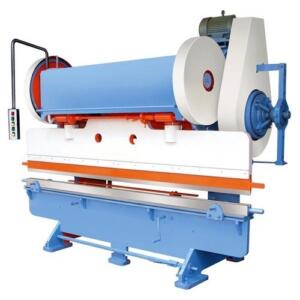
Hydraulic Press Brake: As mentioned earlier, hydraulic press brakes use a hydraulic system to apply force for bending. They offer precise control over the bending process and are ideal for a wide range of applications.
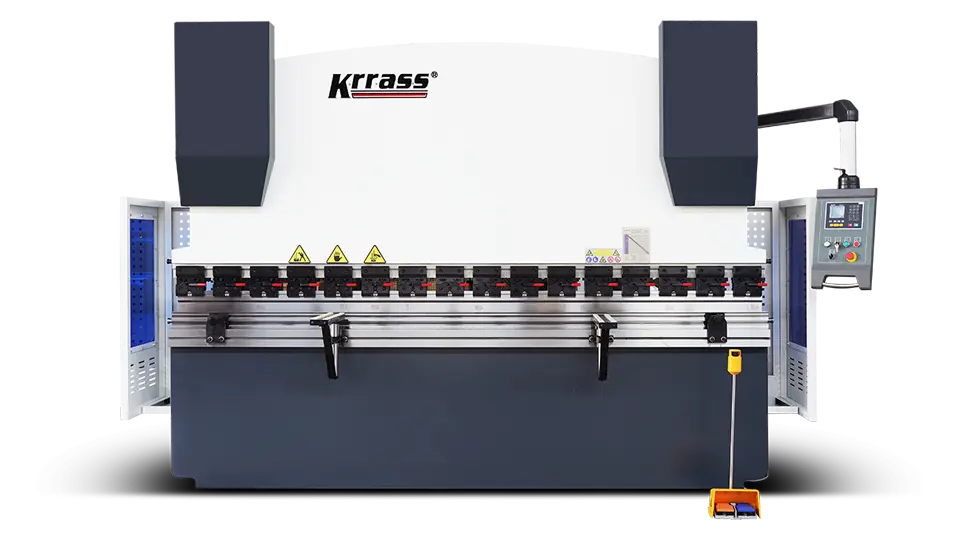
CNC Press Brake: CNC (Computer Numerical Control) press brakes are equipped with computerized controls that allow for precise and automated bending operations. They can store and execute complex bending sequences, making them highly efficient for high-volume production.
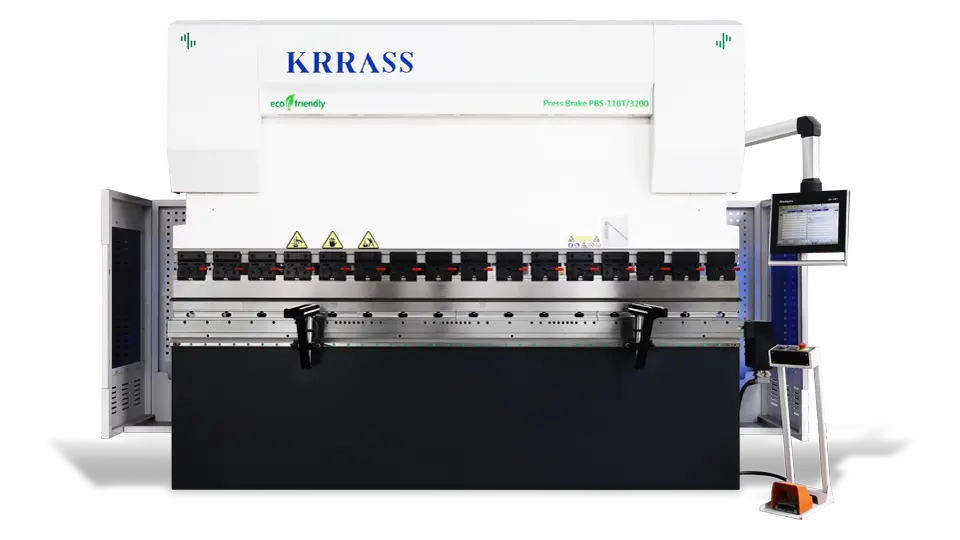
Servo-Electric Press Brake: These press brakes use servo motors to drive the bending mechanism, offering precise control and energy efficiency. They are suitable for applications requiring high accuracy and repeatability.
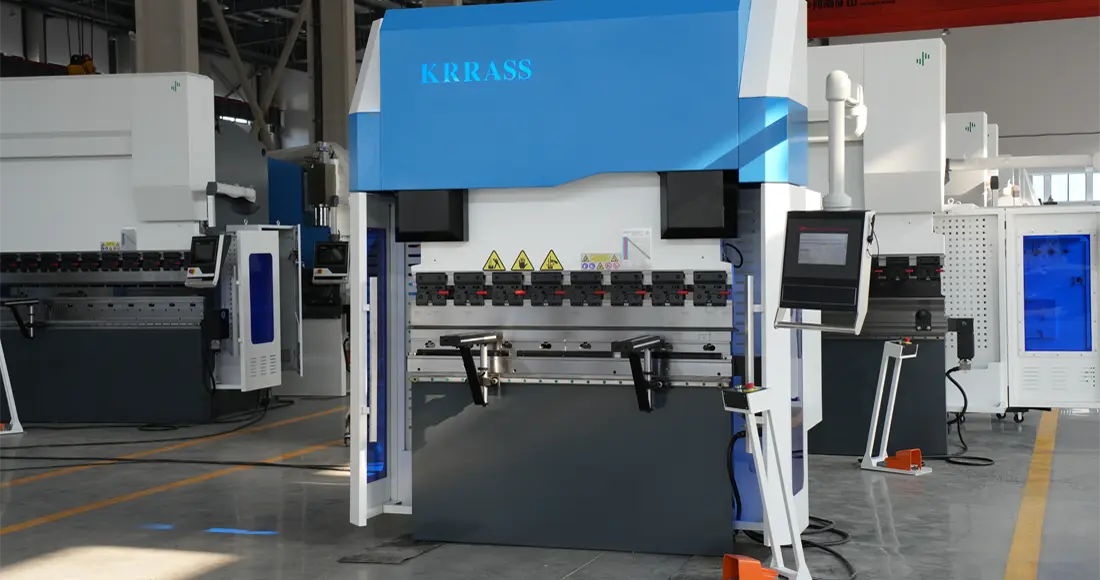
These are some of the common types of press brakes used in the industry, each with its own advantages and applications.
3. What are the Key Components of a Hydraulic Press Brake?
The key components of a hydraulic press brake include:
Hydraulic system: The hydraulic system generates the force needed to bend the material. It consists of a hydraulic pump, hydraulic cylinders, valves, and other components that control the pressure and flow of hydraulic fluid.
Ram: The ram is the moving part of the press brake that applies force to the material. It is controlled by the hydraulic system and moves up and down to perform the bending operation.
Bed and frame: The bed provides support for the material being bent, while the frame holds the ram and other components of the press brake in place.
Die: The die is a specialized tool attached to the bed of the press brake that helps shape the material during the bending process.
Back gauge: The back gauge is a feature that helps position the material accurately for each bending operation. It can be manually adjusted or controlled automatically in modern CNC press brakes.
Control system: In modern press brakes, the control system can be manual, semi-automatic, or fully automatic (CNC). It allows operators to set bending parameters, control the bending sequence, and monitor the bending process.
Safety features: Hydraulic press brakes are equipped with safety features such as guards, light curtains, and emergency stop buttons to ensure the safety of operators during operation.
These are the key components of a hydraulic press brake that work together to bend sheet metal and plate material accurately and efficiently.
4. How Does a Hydraulic Press Brake Work?
Here is how a hydraulic press brake typically works:
Material preparation: The operator places the sheet metal or plate material to be bent onto the bed of the press brake and positions it against the back gauge for accurate bending.
Setup: The operator selects the appropriate die and sets the bending parameters such as bend angle, bend radius, and material thickness on the control system of the press brake.
Bending operation: When the operator initiates the bending cycle, the hydraulic system activates and applies pressure to the hydraulic cylinders, causing the ram to move downward and exert force on the material.
Bending process: As the ram presses the material against the die, it starts to bend along the desired line. The operator can monitor the bending process and adjust parameters if necessary.
Release: Once the material has been bent to the desired angle, the hydraulic system releases pressure, allowing the ram to retract and the bent material to be removed.
Repeat: The operator can repeat the bending process for multiple bends or parts by repositioning the material and setting the bending parameters accordingly.
Overall, a hydraulic press brake works by using hydraulic force to bend sheet metal or plate material accurately and efficiently according to the desired specifications set by the operator.
5. What are the Stages of Operation of a Hydraulic Press Brake?
The operation of a hydraulic press brake typically involves the following stages:
Setup: The operator prepares the press brake for bending by selecting the appropriate die, adjusting the back gauge for material positioning, and setting the bending parameters such as bend angle, bend radius, and material thickness on the control system.
Material loading: The operator places the sheet metal or plate material to be bent onto the bed of the press brake and aligns it against the back gauge for accurate bending.
Bending cycle initiation: The operator starts the bending cycle by activating the hydraulic system, which applies pressure to the hydraulic cylinders to move the ram downward and exert force on the material.
Bending process: As the ram presses the material against the die, it begins to bend along the desired line. The operator monitors the bending process to ensure it meets the specified parameters and makes adjustments if needed.
Release: Once the material has been bent to the desired angle, the hydraulic system releases pressure, allowing the ram to retract and the bent material to be removed from the press brake.
Unloading: The operator removes the bent material from the press brake and may repeat the bending process for additional bends or parts if necessary.
Maintenance and cleanup: After the bending operations are complete, the operator performs any required maintenance tasks on the press brake and cleans up the work area for the next job.
These stages outline the typical sequence of operations involved in using a hydraulic press brake to bend sheet metal or plate material.
6.What are the Advantages of a Hydraulic Press Brake?
Hydraulic press brakes offer several advantages that make them popular in the metalworking industry. Some of the key advantages include:
High bending force: Hydraulic press brakes can generate high bending forces, making them suitable for bending thick and hard materials with precision.
Precision and control: Hydraulic systems provide precise control over the bending process, allowing for accurate bending angles, bend radii, and material positioning.
Versatility: Hydraulic press brakes can handle a wide range of materials and thicknesses, making them versatile for various applications in industries such as automotive, aerospace, and manufacturing.
Consistency: Hydraulic press brakes deliver consistent bending results, ensuring that each part or product meets the quality standards and specifications.
Quiet operation: Compared to mechanical press brakes, hydraulic press brakes operate more quietly, making them suitable for noise-sensitive environments.
Safety features: Hydraulic press brakes are equipped with safety features such as guards, emergency stop buttons, and light curtains to protect operators during operation.
Energy efficiency: Modern hydraulic press brakes are designed to be energy-efficient, consuming less power during operation compared to other types of press brakes.
Overall, the advantages of hydraulic press brakes make them a preferred choice for metal fabrication tasks that require high precision, versatility, and consistent bending results.
7.Where are Hydraulic Press Brakes Used?
Hydraulic press brakes are widely used in various industries for bending sheet metal and plate materials. Some common applications and industries where hydraulic press brakes are used include:
Metal fabrication: Hydraulic press brakes are essential equipment in metal fabrication shops and manufacturing facilities for bending sheet metal and plate materials to create various components and products.
Automotive industry: Hydraulic press brakes are utilized in the automotive industry for bending metal parts used in vehicle bodies, chassis, and interior components.
Aerospace industry: Hydraulic press brakes are used in the aerospace industry for forming sheet metal components used in aircraft structures, engines, and other aerospace applications.
Construction industry: Hydraulic press brakes are employed in the construction industry for bending metal components used in building structures, architectural elements, and infrastructure projects.
Electronics industry: Hydraulic press brakes are used in the electronics industry for manufacturing electronic enclosures, components, and devices made from sheet metal.
Furniture manufacturing: Hydraulic press brakes are utilized in the furniture manufacturing industry for bending metal parts used in furniture frames, structures, and decorative elements.
Agricultural equipment: Hydraulic press brakes are used in the fabrication of agricultural equipment and machinery, such as tractor components, farm machinery parts, and agricultural implements.
Overall, hydraulic press brakes are versatile machines that find applications in a wide range of industries that require precision bending of sheet metal and plate materials for various products and components.
8.How Much Does a Hydraulic Press Brake Cost?
The cost of a hydraulic press brake can vary widely depending on several factors such as the size, capacity, brand, features, and technology of the machine. On average, a new hydraulic press brake can range in price from $50,000 to $500,000 or more. Smaller, entry-level models with lower tonnage capacity and manual controls tend to be less expensive, while larger, high-tonnage models with advanced features such as CNC controls and automatic tool changers can be more expensive.
Here are some general price ranges for different types of hydraulic press brakes:
Entry-level hydraulic press brakes: $50,000 to $100,000
Mid-range hydraulic press brakes: $100,000 to $250,000
High-end hydraulic press brakes with advanced features: $250,000 to $500,000 or more
It’s important to consider additional costs such as installation, training, maintenance, and tooling when budgeting for a hydraulic press brake. Additionally, used or refurbished hydraulic press brakes may be available at a lower cost than new machines, providing a more affordable option for some businesses.
Overall, the cost of a hydraulic press brake can vary significantly depending on the specific requirements of the application and the features needed, so it’s best to consult with equipment suppliers or manufacturers to get accurate pricing information based on your needs.
9. How to Maintain a Hydraulic Press Brake?
Proper maintenance of a hydraulic press brake is essential to ensure its optimal performance, longevity, and safety. Here are some key maintenance tips to keep your hydraulic press brake in good working condition:
Regular inspections: Conduct routine inspections of the press brake for signs of wear, loose components, leaks, and other issues. Address any problems promptly to prevent further damage.
Lubrication: Keep the hydraulic system well-lubricated according to the manufacturer’s recommendations. Regularly check and replenish lubricants as needed to reduce friction and prevent premature wear.
Cleanliness: Keep the press brake clean by regularly removing dust, debris, and metal shavings from the machine. Clean the tooling, back gauge, and surrounding areas to prevent contaminants from affecting the bending process.
Check hydraulic fluid levels: Monitor hydraulic fluid levels and quality regularly. Maintain the correct fluid level and replace the fluid as recommended by the manufacturer to ensure proper functioning of the hydraulic system.
Check and replace filters: Inspect hydraulic filters regularly and replace them at the recommended intervals to prevent contamination of the hydraulic system and ensure optimal performance.
Adjust and calibrate: Periodically calibrate the press brake to ensure accurate bending angles and measurements. Check and adjust the back gauge, ram, and other components as needed for precision and consistency in bending operations.
Train operators: Provide training to operators on proper use and maintenance procedures for the hydraulic press brake. Ensure that operators follow safety guidelines and best practices to prevent accidents and damage to the machine.
Schedule professional maintenance: Arrange for regular maintenance checks by qualified technicians to inspect and service critical components of the press brake, such as the hydraulic system, electrical controls, and structural components.
By following these maintenance tips and guidelines, you can help prolong the life of your hydraulic press brake, maintain its performance, and ensure safe and efficient operation for years to come.
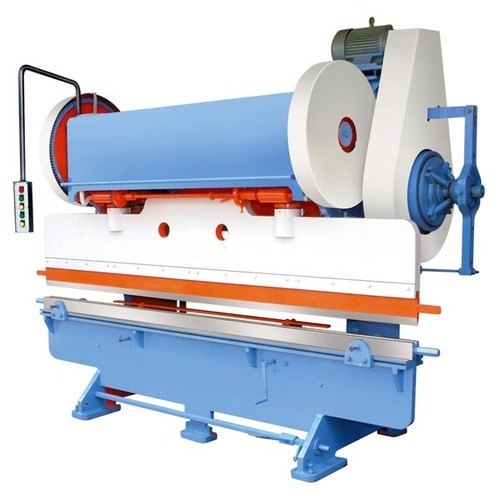




Reviewed by 1 user
NC Press Brake
I bought 125Ton3200 NC Press Brake with E310P from your factory, which is very useful and beautiful. Hope to work together again.